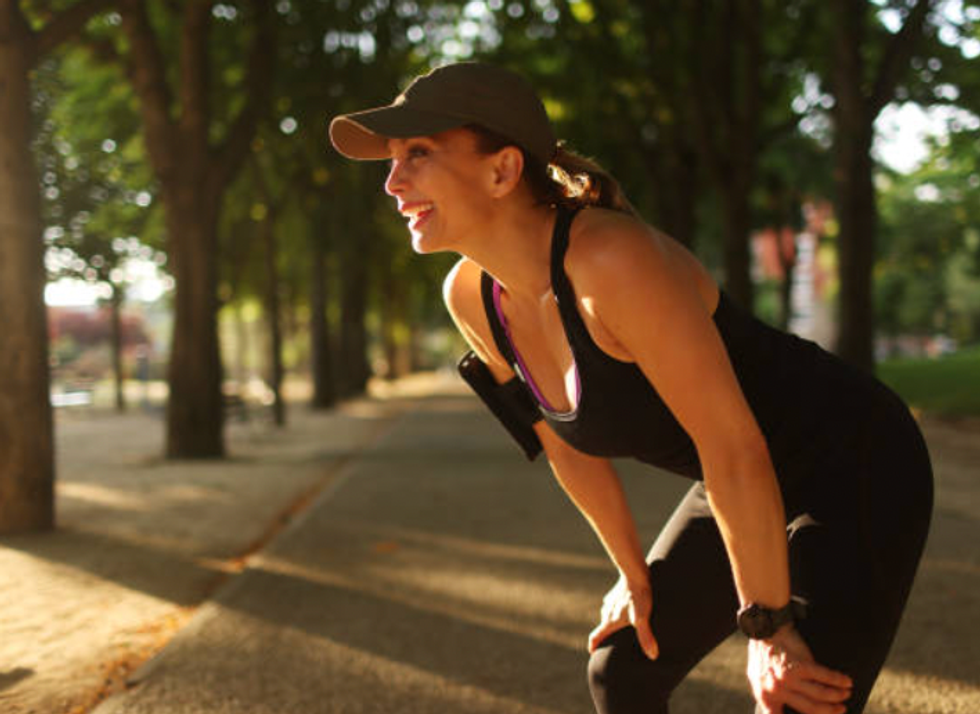Best time of day to exercise REVEALED as scientists find it lowers risk of diabetes, heart attack and stroke

Little has been known about the optimal timing of moderate to vigorous physical activity to improve daily blood glucose control - until now
Don't Miss
Most Read
New research reveals the optimal time of day to exercise to reduce the risk of diabetes, heart attack and stroke.
A study of almost 200 overweight or obese sedentary adults found moderate to vigorous physical activity in the evening was most beneficial in lowering daily blood sugar levels.
Consistently high blood sugar levels is a complication of type 2 diabetes that can damage the body's organs, leading to heart attack, stroke, and problems with the kidneys, eyes, gums, feet and nerves.
It is well established that moderate to vigorous physical activity enhances glucose homeostasis (the process by which the body maintains a stable level of blood glucose) in adults with overweight and obesity who are at higher risk of developing insulin resistance.

Accumulating greater than 50 percent of moderate to vigorous physical activity in the evening is optimal
|Getty Images
However, little is known about the optimal timing of moderate to vigorous physical activity to improve daily blood glucose control.
To plug this knowledge gap, researchers recruited 186 adults with an average age of 46 years and a body mass index of 32.9 kg/m2 with overweight or obesity.
The aim of the trial was to study the efficacy and feasibility of time-restricted eating on visceral fat, body composition and cardiometabolic risk factors in adults with overweight and obesity.
The physical activity and glucose patterns of participants were simultaneously monitored over a 14-day period using a triaxial accelerometer worn on the non-dominant wrist and a continuous glucose-monitoring device.
The study’s researchers classified the volume of moderate to vigorous physical activity accumulated for each day. Categories included inactive (if no activity was accumulated), and as ‘morning,’ ‘afternoon’ or ‘evening’ if more than 50 percent of the moderate to vigorous physical activity minutes for that day were accumulated between six am to noon, noon to six pm., six pm to 12 pm, or as ‘mixed’ if none of the defined time windows accounted for greater than 50 percent of the moderate to vigorous physical activity for that day.
Results showed that accumulating greater than 50 percent of moderate to vigorous physical activity in the evening was associated with lowering day, night and overall blood glucose levels compared with being inactive. This association was stronger in those participants with impaired glucose regulation. The pattern of these associations was similar in both men and women.
“Our results highlight the importance of the field of precision exercise prescription. In clinical practice, certified sports and medical personnel should consider the optimal timing of the day to enhance the effectiveness of the exercise and physical activity programs they prescribe,” said Jonatan R. Ruiz, PhD, professor of physical activity and health at the University of Granada, Spain. Ruiz is one of two corresponding authors of the study with predoctoral researcher Antonio Clavero-Jimeno from the same research center.
“As the field moves towards individualized exercise prescriptions for different chronic conditions, this study now provides additional insights beyond just telling patients to ‘move more,’ but instead to move as often as possible and to prioritize afternoon-to-evening movement when feasible for glucose regulation,” said Renee J. Rogers, PhD, FACSM, senior scientist, Division of Physical Activity and Weight Management, University of Kansas Medical Center. Rogers was not associated with the research.
LATEST DEVELOPMENTS

Exercising after meals is a great way to help manage spikes in blood sugar that occur after eating
|Getty Images
The findings echo previous research. A study published last year in the American Journal of Medicine indicates that physical activity may be most effective at reducing blood glucose and improving insulin sensitivity if it is done later in the day, especially after meals.
It's not exactly clear what accounts for this effect. Several studies have also shown that exercising after meals is a great way to help manage spikes in blood sugar that occur after eating.
What counts as moderate to vigorous aerobic activity?
Moderate activity will raise your heart rate, and make you breathe faster and feel warmer. One way to tell if you're working at a moderate intensity level is if you can still talk, but not sing.
Vigorous intensity activity makes you breathe hard and fast. If you're working at this level, you will not be able to say more than a few words without pausing for breath.
In general, 75 minutes of vigorous intensity activity a week can give similar health benefits to 150 minutes of moderate intensity activity, notes the NHS.










